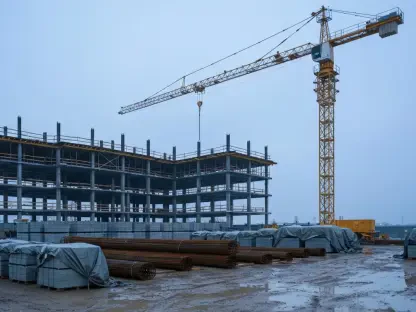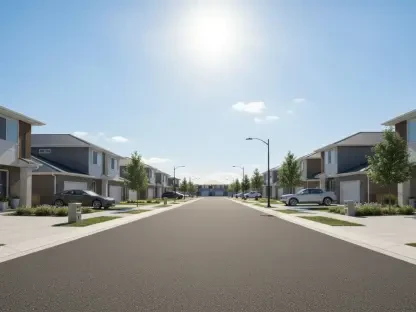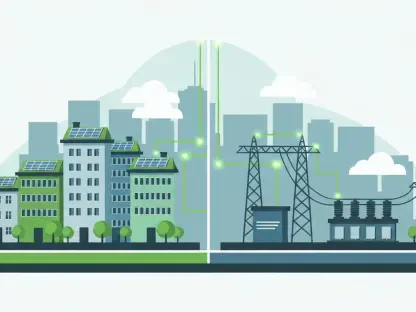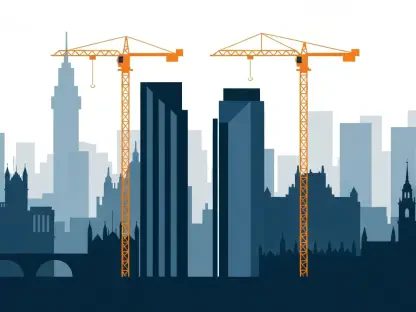New York City residents, particularly condo and co-op owners, are grappling with the financial impact of complying with Local Law 97. Mandating significant reductions in greenhouse gas emissions from large buildings by set intervals until 2050, this ambitious legislation is causing concern among property owners about the costs of necessary upgrades and the potential for substantial fines. As one of the most rigorous laws in the country aimed at reducing emissions from buildings, Local Law 97 represents a significant challenge for property owners.
Mandate of Local Law 97
Overview of Local Law 97 Requirements
Local Law 97 requires nearly 50,000 large buildings in New York City to reduce their emissions starting in 2024, with increasingly stringent targets set for 2030 and 2050. This law is one of the most rigorous in the United States, aiming to significantly curb carbon emissions from buildings, which are a major source of pollution in the city. The legislation is a critical component of the broader effort to combat climate change and improve air quality, emphasizing the need for immediate action to reduce the carbon footprint of urban structures.
Initial Compliance Measures
Initially, buildings can comply with relatively inexpensive measures, such as improving insulation and upgrading lighting systems. However, as the deadlines approach, more extensive and costly upgrades will be necessary, including the electrification of heating and hot water systems. These substantial upgrades represent a considerable financial undertaking for building owners, many of whom are already stretched thin by existing expenses. The costs associated with achieving compliance eventually move beyond mere enhancements, requiring significant investments in new infrastructure and technology to meet the demanding standards.
Long-term Compliance Challenges
By 2030, most buildings must reduce their emissions by 40%, a target that over half of the buildings have yet to meet. The financial implications of achieving these reductions are substantial, with many buildings facing the prospect of spending tens of millions of dollars on necessary upgrades. These measures involve comprehensive overhauls that can dramatically alter the operation and maintenance costs of a building, creating financial strain for individual owners and property managers alike. As deadlines loom closer, the pressure mounts for property owners to identify feasible solutions for compliance and financial sustainability.
Financial Burden on Property Owners
Impact on Condo and Co-op Owners
Residents of buildings like the Queensview cooperative in Queens are emblematic of the wider anxieties stemming from Local Law 97. With around half of the cooperative’s residents being retirees, there is significant concern about the potential doubling of maintenance fees to cover the upgrades. Many residents are already burdened with hefty mortgage payments or other high living expenses. The prospect of increased living costs caused by mandatory upgrades is not only financially overwhelming but also threatens the affordability and accessibility of housing for many individuals in the community, especially those on fixed incomes.
Cost Estimates and Financial Strain
The financial burden of compliance is daunting. For example, Queensview’s estimated cost for necessary upgrades is $62 million, which could double the monthly maintenance fees for individual units. This financial strain is particularly unsettling for individuals on fixed incomes or with existing financial burdens. The exorbitant costs could result in significant changes in occupancy dynamics within the city, affecting not only property owners but renters as well. As residents grapple with the financial requirements of these updates, the broader economic impacts are expected to ripple through the housing market, influencing levels of affordability and financial stability for many.
Potential Penalties for Non-Compliance
As of early 2024, approximately 10% of New York City buildings were not in compliance with the law’s initial requirements, potentially incurring penalties shortly. The fines for non-compliance average $268 per metric ton of excessive carbon emissions, adding to the financial pressure on property owners. The added financial burden of penalties for non-compliance further heightens the urgency and stresses property owners, particularly as they struggle to balance compliance with their budgetary constraints. The looming threat of fines for non-compliance underscores the necessity for immediate action and proactive measures to ensure adherence to the new regulations.
Legislative Responses and Tax Incentives
Revival of the J-51 Tax Break
In response to the financial pressures associated with Local Law 97, the New York City Council recently passed a revival of the J-51 tax break. This property tax abatement provides crucial financial relief for significant capital improvements in affordable housing, helping to offset the costs of compliance. By increasing the range of financial support available to property owners, lawmakers aim to reduce the economic burden while still enforcing strict environmental regulations. The reintroduction of this tax break exemplifies the local government’s intent to aid property owners in meeting the demanding requirements of Local Law 97.
Proposed Broader Tax Incentives
State lawmakers are advocating for a more extensive tax exemption to encompass more buildings and cater explicitly to retrofits designed to cut carbon emissions. These proposed incentives aim to strike a balance between adhering to strict emission standards and mitigating financial hardship for property owners. By expanding the scope and applicability of tax incentives, the legislation seeks to provide a lifeline to those facing significant fiscal challenges in complying with mandates. The support reflects a recognition of the dual importance of financial feasibility and environmental responsibility in achieving long-term sustainability goals.
Financial Aid Eligibility and Concerns
Estimates suggest that up to 54% of buildings needing substantial upgrades could be eligible for these financial aids. However, there are concerns about the potential impact on city revenue. The J-51 and prospective state tax incentives are designed to provide much-needed support while addressing these fiscal challenges. The tension between maintaining city revenue and providing necessary financial relief is a critical issue that requires strategic planning and meticulous policy formulation. Balancing financial health with legislative commitments to reduce emissions continues to be a central theme in navigating the economic realities of Local Law 97 compliance.
Long-term Environmental Commitment
Balancing Financial and Environmental Goals
Despite the financial challenges, there is an underlying commitment to the city’s long-term environmental goals. Stringent carbon reduction regulations are integral to addressing the broader issue of climate change, even as the financial and logistical complexities associated with this substantial environmental commitment are addressed. The reality of balancing immediate fiscal pressures with overarching environmental objectives necessitates a combined effort from all stakeholders, including policymakers and property owners, to develop innovative solutions that align with both economic and ecological priorities.
Potential Energy Savings
The prospective tax incentives and potential energy savings from modernized, efficient systems could sway decisions toward achieving the stipulated emission cuts. Enhanced energy efficiency can be achieved through low-difficulty measures for some buildings, while others will require deep-reaching overhauls, including full electrification. The potential for long-term energy savings offers a significant incentive for property owners to invest in required upgrades, as modernized systems can reduce future operational costs. By focusing on energy efficiency’s economic benefits, stakeholders aim to align immediate financial incentives with long-term environmental gains.
Government and Property Owners’ Collaboration
City officials and property owners are working together to explore multiple avenues for funding these mandatory retrofits. State-level initiatives under the $5 billion New Efficiency: New York program, slated for allocation starting in 2026, are among the options being considered to support compliance efforts. Collaboration between governmental authorities and the private sector is crucial in identifying viable funding strategies and fostering a cooperative environment to meet the stringent regulations. The proactive engagement of both parties underscores the collective commitment to ensuring the successful implementation of Local Law 97 and achieving its ambitious goals.
Conclusion
Residents of New York City, especially those who own condos and co-ops, are facing financial pressures due to Local Law 97. This law requires substantial reductions in greenhouse gas emissions from large buildings at set intervals, continuing until 2050. This ambitious piece of legislation aims to cut emissions from buildings significantly, positioning itself as one of the strictest in the nation. Property owners are concerned about the costs associated with the necessary upgrades to meet these stringent requirements and the steep fines that could be imposed for non-compliance. Upgrading heating, cooling, and insulation systems in older buildings often entails large expenditures. The law’s impact extends beyond just environmental goals, influencing the real estate market as well. The urgency to comply has raised questions about affordability and the long-term effects on property values. Balancing the ambitious goals of Local Law 97 with the economic realities faced by property owners represents a significant and ongoing challenge.









